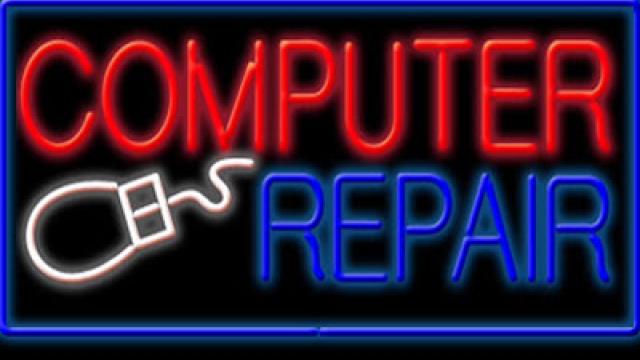
Revive, Renew, Repair: Unlocking the Secrets to Computer Restoration
Welcome to a comprehensive guide on computer repair, where we will delve into the world of reviving, renewing, and repairing your beloved device. In this fast-paced digital age, it’s essential to equip oneself with the knowledge and expertise on computer restoration, offering a lifeline to our trusted laptops and computers when they encounter technical difficulties.
Throughout this article, you will discover a wealth of computer repair tips and strategies, designed to empower you to troubleshoot and resolve common issues that may arise. Whether it’s a sluggish system, a stubborn virus, or an unresponsive screen, our aim is to provide you with the tools and insights needed to breathe life back into your ailing computer.
Specifically, we will also delve into the realm of laptop repair, acknowledging the growing popularity and prevalence of these portable computing devices. By understanding the nuances involved in maintaining and fixing laptops, you’ll be able to extend their lifespan, safeguard important data, and restore optimal functionality. So, without further delay, let’s embark on this journey of computer rejuvenation, as we unlock the secrets to successful restoration!
Common Computer Repair Issues
Slow Performance: One of the most common computer repair issues is slow performance. Over time, computers can become sluggish due to a variety of factors such as insufficient memory, excessive background processes, or a cluttered hard drive. To address this issue, it is recommended to regularly clean up temporary files, uninstall unnecessary programs, and run regular malware scans to ensure optimal performance.
Blue Screen of Death (BSOD): The dreaded Blue Screen of Death is a familiar sight for many computer users. This error occurs when the operating system encounters a critical error and is forced to shut down to prevent further damage. Common causes of this issue include hardware or driver conflicts, faulty RAM, or a corrupted operating system. To resolve BSOD errors, updating drivers, running diagnostic tests, or restoring the system to a previous restore point can be helpful.
Malware Infections: Malware infections can wreak havoc on a computer system, resulting in unexpected pop-ups, slow performance, or even stolen personal information. Common types of malware include viruses, spyware, and ransomware. Prevention is key in dealing with this issue, so make sure to install a reliable antivirus software, regularly update it, and avoid clicking on suspicious links or downloading files from untrusted sources.
Remember that these are just a few of the common computer repair issues that users may encounter. While it’s important to address these problems promptly, seeking professional assistance may be necessary for complex issues or situations where DIY solutions are not effective.
Essential Laptop Repair Tools
When it comes to laptop repair, having the right tools on hand is essential. These tools not only make the repair process smoother but also help ensure that you can tackle a wide range of issues. Here are some must-have tools for any laptop repair enthusiast:
Screwdriver Set: A good set of screwdrivers is a must-have for any laptop repair task. Different laptops have different types of screws, so having a set with various sizes and types of screwdriver heads is crucial. This will allow you to easily remove and replace screws without causing any damage.
Spudger Tool: A spudger tool is a non-conductive tool that can be incredibly handy when working on laptops. It helps in prying open tight-fitting or delicate components, such as connectors and cables, without causing any harm. This tool is essential for safely maneuvering inside the laptop without the risk of damaging any sensitive parts.
Thermal Paste: Over time, the thermal paste that sits between the laptop’s CPU and heat sink can deteriorate, leading to overheating issues. Having a tube of fresh thermal paste is crucial for reapplying it during repairs. This will help ensure optimal heat transfer and prevent the laptop from overheating in the future.
365pcfix
These are just a few essential laptop repair tools that every aspiring repair technician or enthusiast should have in their arsenal. With the right tools by your side, you’ll be well-prepared to tackle common laptop issues and keep your device running smoothly for years to come.
Tips for Effective Computer Restoration
Back Up Your Data
Before embarking on any computer restoration process, it is crucial to back up your important data. This step helps ensure that you don’t lose any valuable files or information during the restoration process. Whether you choose to use an external hard drive, cloud storage, or another backup method, investing time in backing up your data is an essential precaution.Conduct Regular Maintenance
To avoid major computer issues, it is important to conduct regular maintenance on your device. This includes tasks such as updating your operating system, performing virus scans, and cleaning up unnecessary files. By staying on top of regular maintenance tasks, you can prevent potential problems from escalating and maintain the overall health of your computer.Seek Professional Help When Needed
While DIY computer repair can be cost-effective and empowering, there are times when seeking professional help is necessary. Complex hardware issues, intricate software problems, or situations where you are unsure of the best course of action may require the expertise of a technician. It is always better to seek professional assistance rather than taking risks that could further damage your computer.



